Symposium overview
This event was co-chaired by Professor Dimitra Simeonidou FREng and Professor Srinath Srinivasa, and was attended by 60 delegates. It was co-organised by the International Institute for Information Technology – Bangalore (IIITB) with a focus on how to build digital public infrastructure (DPI).
DPI has the potential to drive progress towards sustainable development. It can transform the way people access services and build digital inclusion.
Success stories from countries investing in DPI are already emerging. India developed the United Payments Interface (UPI) to give free, universal access to financial services. In the seven years since its launch, more than 260 million users have joined the platform. This rapid progress shows the appetite for DPI solutions.
Barriers to DPI
Building DPI is not enough. For instance, 2.7 billion people are still not connected to the internet and hundreds of millions of people lack proof of legal identity. Barriers such as these often exclude marginalised and remote communities from digital solutions. To provide equitable and safe access to DPI while ensuring environmental sustainability, multi-sectoral and global collaborations that include all users from the outset of their design are critical.

Traffic in Mumbai. Image credit: Atharva Tulsi @unsplash
Cross-disciplinary thinking usually comes as an afterthought, but it must be integrated into DPI from the beginning
Professor Dimitra Simeonidou, Symposia Chair
Discussion themes
The symposium brought an interdisciplinary approach to discussions on DPI by bringing together engineers and non-engineers from a wide range of backgrounds and sectors. The event centred around three sub-themes:
- designing DPI for environmental sustainability
- social impacts of DPI
- security, privacy, and availability of DPI.
Chairs
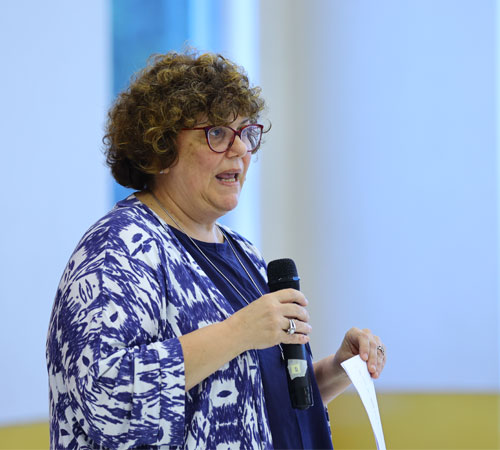
Professor Dimitra Simeonidou FREng
Professor at the University of Bristol, the Co-Director of the Bristol Digital Futures Institute, and the Director of the Smart Internet Lab.
Professor Simeonidou's research focuses on high-performance networks, programmable networks, wireless-optical convergence, 5G/6G, and smart city infrastructures. She is increasingly working with social sciences on digital transformation for society and businesses. Dimitra is a Fellow of the Royal Academy of Engineering, the Institute of Electrical and Electronics Engineers (IEEE), and the Wireless World Research Forum (WWRF). She is also a Royal Society Wolfson Scholar and a member of the UK Clinical Research Collaboration.
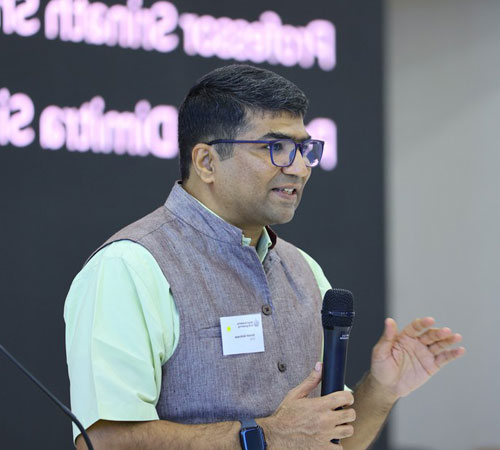
Professor Srinath Srinvasa
Head of the Web Science Lab and the Dean (Research and Development) at IIITB in India.
Professor Srinvasa's research is focused on internet science, understanding the worldwide web’s impacts on humanity, and how the internet can enable social empowerment and capability building. Srinath has participated in several initiatives for technology-enhanced education, including Visvesvaraya Technological University’s Edusat program, the National Programme for Technology Enhanced Learning (NPTEL), and more.
Sessions and speakers
Designing DPI for environmental sustainability
Session summary:
This session delved into the complexities of creating inclusive and sustainable DPI, offering practical considerations for researchers as well as real-life examples of DPI that serve people – from Aadhar in India to the Enhancing Agri-Food Transparent Sustainability (EATS) project in the UK. Together, participants engaged in a role-playing exercise that pushed them to think about the opportunities, challenges, and potential of DPI to improve people's lives across the globe.
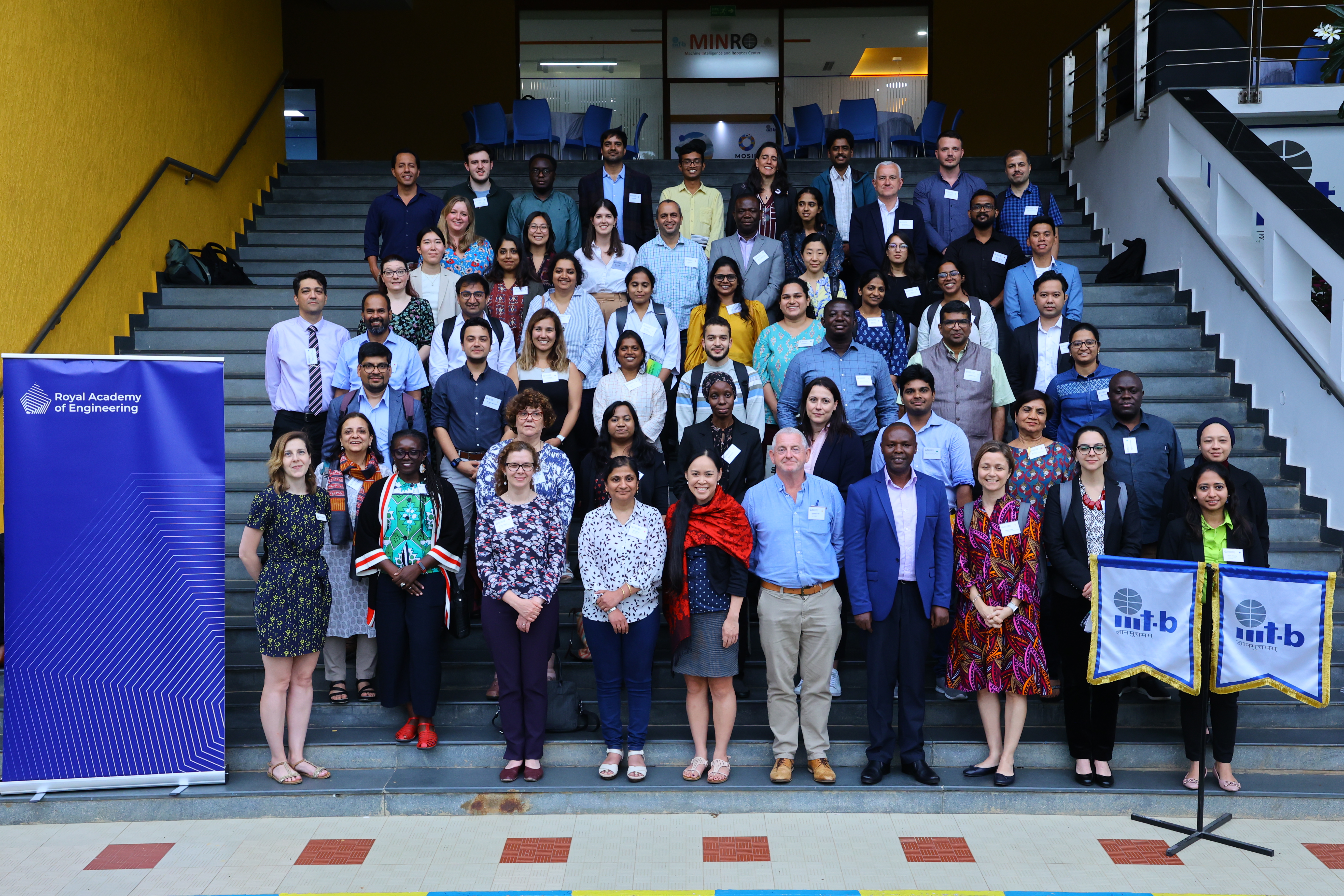
Delegates at the Digital futures event in Bengaluru, India.
In designing DPI, we can find ourselves leaving people behind.
Michael Koech, Airtel Africa
DPI can help advance progress towards the Sustainable Development Goals (SDGs), but they may create new issues if not considered carefully. Data governance and environmental sustainability, for instance, are growing concerns in the digital age. To ensure transparency, inclusion, and sustainability in digital solutions, researchers must understand the full picture of the challenge they aim to address.
Key takeaways:
- Researchers should consider the environmental impacts of high-tech solutions that may have big energy needs and produce waste.
- Sustainability does not only involve protecting the environment – it also means suiting a community’s needs, capacities, and resources.
- Artificial intelligence (AI) and cloud computing can be helpful tools for DPI, but researchers should consider local contexts and technical capabilities before employing them.
- DPI development must include communities – from initial stages to implementation – to ensure solutions are tailored to their local contexts and needs.
- Digital solutions can be tailored and translated across contexts, leveraging learnings from one country to another.
Presentations
Challenges and opportunities for sustainable computing on DPI – an India perspective
Pratibha Moogi, IBM Research Lab Bangalore
Across the globe, digital infrastructure is making incredible progress – supporting digital solutions for people, increasing access to digital resources, and more. This rapid scaling-up of DPI presents both challenges and opportunities for the future. On one hand, technology can help advance inclusive services and enables connectivity and reach to even the most remote communities. On the other hand, the energy and technological requirements (such as large servers) to make these solutions work can increase emissions and e-waste. Security and privacy, as well as governance of user data, are also continuous challenges that are worth considering in designing DPI.
To contextualise these opportunities and challenges, Pratibha referred to the rapid growth of technology and DPI in India. Across the country, there are nearly 700 million internet users (43% of the total population). India has a massive social media presence and is proactively deploying new technologies. In the last decade, DPI have boomed in India with support from the government:
- Aadhar was launched in 2009 to provide digital identification to all citizens and has since become the world’s largest platform of its kind.
- DigiLocker serves as a digital wallet, allowing citizens to store their important, government-issued documents all in one place.
When designing DPI, Pratibha underlined, it is critical to understand the full scope of the challenge that the DPI is meant to solve, its technological requirements, and the people it is intended to serve. Innovators and researchers must consider connectivity contexts, computing requirements, data storage, and the level of automation, as these elements can both elevate costs and reduce sustainability if not managed from the onset.
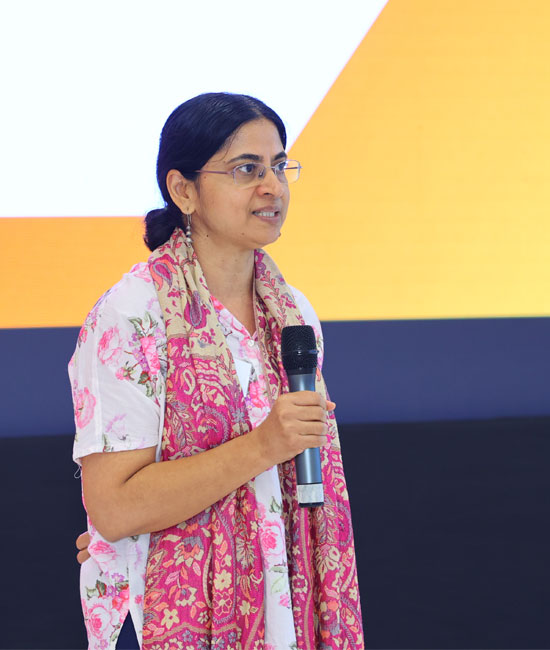
Pratibha Moogi, IBM Research Lab Bangalore
Why transparency really matters for sustainable DPI
Professor Peter Edwards, University of Aberdeen
Sustainability for DPI does not only refer to environmental issues, but it also means being widely available and usable for citizens. A critical part of ensuring DPI uptake and continued use is transparency. Peter emphasised this point: “Openness is at the very core of DPI.” In a practical sense, this means ensuring that people have access to key information. This includes resources that explain what the technology is and how it works on a basic level, why the users are providing data when they engage with the technology, how their data will be used, and what the environmental impact of the DPI is. To ensure DPI are developed inclusively and transparently, citizens must be included across the entire design process, from initial planning to implementation.
An example of inclusive and transparent DPI, TrustLens is a tool to help cities understand the opportunities and trade-offs of smart infrastructure such as smart streetlights or air quality sensors. During the development of the tool, Peter and his collaborators engaged designers and social scientists to collaborate with the local community, developing sample scenarios to present to citizens to better understand their concerns.
An additional example, The Enhancing Agri-Food Transparent Sustainability (EATS) project is building a digital sustainability platform designed to help actors along the food supply chain understand the emissions their respective products produce.
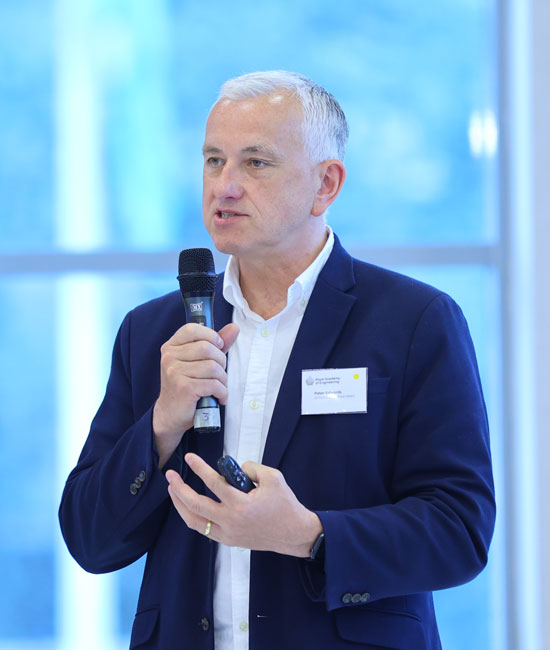
Professor Peter Edwards, University of Aberdeen
Using this tool, they can then identify areas to improve and enact change. To conclude his presentation, Peter offered some considerations for participants, encouraging them to think about how they can ensure that DPI are designed in partnership with citizens, sufficiently transparent, and address social and environmental trade-offs.
Digital public infrastructure to achieve circular economy: focus on solid waste management in low- and middle-income countries
Michael Koech, Airtel Africa
Using a case study about waste management in low- and middle-income countries, Michael highlighted the complexities of achieving a circular economy and the potential of DPI to drive progress. Around 40% of the world’s waste goes to open dump sites, with much of it ending up in the environment – from fields to rivers, oceans, and soils. Managing this waste is a big challenge as it is resource intensive, undermined by uncontrolled dumping, and largely handled by an informal sector which lacks infrastructure. To better understand and address the issue of waste management using DPI, data is needed to understand the waste itself but also its flows and current collection.
A circular economy approach, however, could help improve the sustainability and efficacy of waste management through DPI. Initially, digital solutions can engage citizens with educational resources on recycling and provide a platform to report illegal dumping. They can also create a channel for mobile payments to workers in the waste sector, formalising their work. From a monitoring standpoint, DPI can use AI and the Internet of Things (IoT) to better identify recycling materials, improving the efficiency of waste management processes.
Addressing complex issues such as waste management requires collaboration with all stakeholders – citizens, regulators, manufacturers, digital innovators, and many others – to create effective solutions.
After the presentations, participants were divided into groups and asked to imagine themselves as a project team tasked with developing solutions for a variety of challenges in different countries, centred on a specific Sustainable Development Goal (SDG). They were asked to think about the many considerations the session chairs presented, including challenges and limitations, designing collaboratively with citizens, potential trade-offs, transparency, AI’s potential role, and policies and regulations.
Though groups examined different challenges across the globe, such as sustainable transport in India, reducing plastic waste in the Philippines, and improving access to education in Nigeria, Frontiers participants came to several common key conclusions:

Michael Koech, Airtel Africa
- All digital solutions must be designed with those they are meant to help to be effective. They also emphasised that people need access to information on their data usage and collection.
- Though digital solutions can offer many benefits, addressing the need for sustainable energy sources and unstable or unavailable connectivity in remote communities is an ongoing challenge.
- In addition to citizen inclusion, policymakers must also be included to ensure understanding of and buy-in for the technology.
Social impacts of DPI
Session summary:
The ultimate goal of DPI is to benefit the people who will use them, whether it be by improving financial inclusion, providing access to government services, and improving connectivity. However, this requires collaborative and innovative approaches. In this session, speakers offered examples and techniques to ensure DPI create positive social impacts.
Presentations
Architecting DPI to impact economies and societies at scale
Kamya Chandra, Centre for Digital Public Infrastructure
“How can your country leverage DPI to fast-track inclusion, sustainability and economic growth?”
DPI have the power to advance all these goals, she underlined, but only if adapted for each context. In the case of low-income countries, access to finance is rife with obstacles – from a lack of physical commerce to a need for proof of identification, which often excludes poor and disenfranchised groups from engaging in the formal economy.
To illustrate her point, Kamya used India as an example. In 2008, India was one of the world’s least banked nations, with only 20% the population had access to banking services. In only nine years, this increased dramatically to 80% because of advances in digital identification. This allowed people to create digital proof of income and high-trust credentials while making online banking available to those who did not previously have access. Estimates suggest this scale of advance in financial inclusion would have taken five decades without the new technology.

If it cannot be reused, it is not DPI.
Kamya Chandra, Centre for Digital Public Infrastructure
To create effective DPI that can impact economies and societies, innovators and researchers must consider several traits of successful DPI:
- For example, they must be built with reusable architectures, allowing different components to be tailored to different countries and communities. Kamya emphasised, “If it cannot be reused, it is not DPI.”
- DPI must also be designed with the final user stakeholders, including the public and private sector. They need to be both federated and decentralised, meaning they can be more successful if they draw from the expertise and be owned by a variety of players including governments.
- Importantly, all DPI must ensure the security and privacy of their users. If developed with these qualities in mind, DPI has the potential to build more inclusive economies around the world.
Strategies for creating public-value-driven DPI
Beatriz Vasconcellos, University College London Institute for Innovation and Public Purpose (UCL IIPP)
“How can we design and implement socially valuable DPI?”
While DPI is driving potential to improve inclusion, build economies, and more, Beatriz asked, Though groups creating tech solutions (such as governments) are often siloed, DPI can break down monolithic structures, promoting collaboration through shared ownership and structures. To accomplish this, innovators must find a minimum set of standardised components that allow for decentralised solutions, which she dubbed “shared means to many ends.” For instance, this can be seen in technology such as Touch ID, iCloud, and location services, which can be used across many applications for different uses. This requires starting with a clear social mission which can be supported by infrastructure thinking.
Beatriz then set out to break down the definition of DPI. Though “public” is part of its name, this does not necessarily mean it needs to be government-owned or operated. Rather, its purpose should be to serve the public. For example, in Brazil, the Central Bank created Pix, an online payment system. While the government owns and operates it, it allows individuals to use the platform. The creation of this infrastructure was also driven by the public demand for a cheap and easy way to transact digitally.
DPI must be designed with inclusivity as a central consideration. While this creates competition between public-driven DPI and corporate tech giants, Beatriz suggested that public institutions can reshape markets through their infrastructure initiatives and standards. A societal perspective on DPI is also critical, focusing on their potential to drive positive change and inclusion. At the same time, it is essential to recognise the limitations of regulatory measures in comparison to market-driven solutions and public-sector-led development.
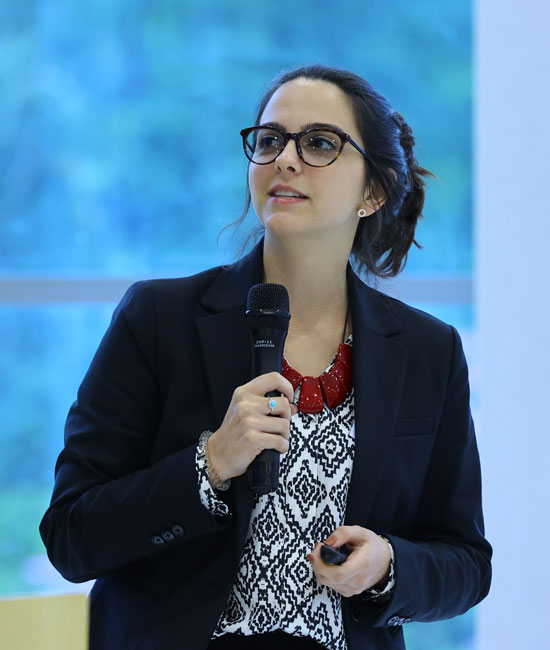
Beatriz Vasconcellos, University College London Institute for Innovation and Public Purpose (UCL IIPP)
Is fair gig work on digital platforms possible?
Professor Balaji Parthasarathy, IIITB
With advances in technology, digital platforms have emerged as the key component of any business model. The rapid growth of these platforms can drive employment, both as employees of digital platforms and gig work. However, this dynamic does not always drive growth and inclusion, Balaji underlined while opening his presentation. Gig workers, considered independent contractors, benefit businesses as they can tap into talent from across the globe at a lower cost. In theory, this dynamic can benefit workers as well, allowing them to work flexibly and earn as much as they want.
The reality, though, is that gig work is often not decent work. It does not ensure a fair income, social protection, or security. Workers are forced to take on risks that businesses would traditionally bear, while having no influence in business decisions. They have no guarantee against termination and their work is evaluated through algorithms rather than human judgment.
To help participants better understand the challenges faced by gig workers, Balaji introduced a Monopoly-style game called “The Gig Lane”. This interactive exercise put participants in the shoes of a gig worker for a food delivery platform in Bangalore. The scenarios presented in the game, such as getting into car accidents and receiving fewer orders due to insufficient logged hours, were all drawn from real-life situations.
Participants reflected on their experience, noting that the incentives in the gig platform create more risk. The algorithms managing the platforms are not meant to benefit the people working for them. For instance, the platforms require drivers to deliver in the shortest possible time, while drivers want to deliver quickly so they can take on another order. This often leads to drivers committing traffic violations such as speeding and risking dangerous accidents on the road. They create incentives such as achieving a certain number of orders in a set amount of time to receive payment, while often not providing additional orders when workers get close to the target.
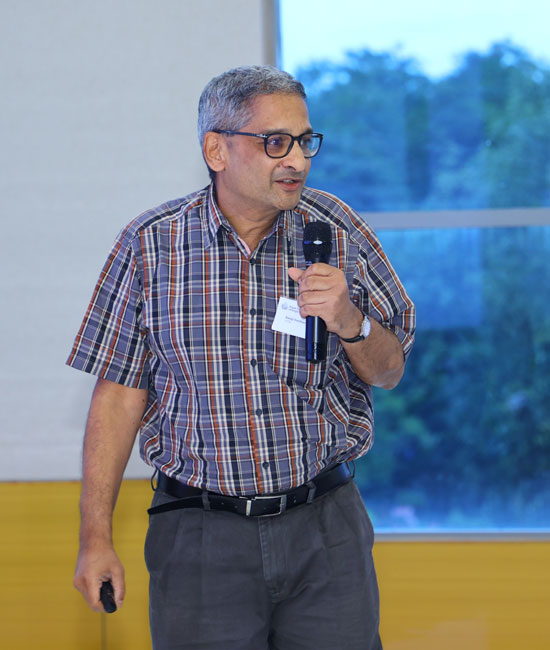
.Professor Balaji Parthasarathy, IIITB
Together, participants brainstormed ways to make gig work fairer. They suggested better coupling of regulation and technology. Regulation must protect these workers and better define the limits on businesses. As it stands now, companies benefitting from this type of gig work typically register as tech companies instead of transportation or food delivery companies, which absolves them of many regulations in place in those respective industries. On the technology side, platforms must create better channels to intake and implement worker feedback, which is currently either processed algorithmically or is delayed significantly, such that its impact becomes ineffective.
Security, privacy, and availability of DPI
Session summary:
The success of any DPI is not determined by its technological makeup alone, but rather by the extent of its adoption. In this session, presenters underlined that some of the key factor determining user engagement with DPI are privacy and security. To establish trust in a platform, innovators must ensure open lines of communication with people, protect user data, and advance inclusion, especially for communities most often digitally excluded.
With this backdrop, participants came together to examine the strengths, weaknesses, opportunities, and threats to DPI solutions. Across different aspects of DPI, common themes were highlighted that could determine the success or failure of DPI.
Key takeaways:
- Building trust in DPI is key to ensuring their uptake. Accomplishing this means using reliable systems, opening communication, and bolstering security.
- DPI must be simple and easy to use, modifiable to different environments, actionable, relevant to target communities, and trusted to be successful.
- Trust and security ensure long-term usage of DPI. This requires building channels for secure communication and data protection.
- If any issues arise, there must also be transparency and venues for the public to engage.
- Digital literacy can be a limiting factor for the uptake of DPI, especially in remote and rural communities. DPI creators should work to ensure the digital divide does not grow because of their work.
- Ensuring safe and ethical use of data requires regulation and standards.
Presentations:
Opportunities and challenges of DPI
Professor Gerard Parr MBE, University of East Anglia
Kicking off his presentation, Gerard emphasised the fundamental role of establishing trustworthiness when developing digital resources. DPI, as he explained, functions as a sophisticated layer atop the internet's physical infrastructure. However, the effectiveness of DPI relies on establishing a robust foundation not only in the physical infrastructure but in ensuring security for users.
There are numerous risks to creating trustworthy DPI, such as inadequate investment in computing equipment, shortcomings in underlying networks, challenges around funding, and lack of user empowerment. DPI must provide accessible avenues and incentives to encourage engagement. When DPI are developed inclusively and securely, however, they can confer important benefits for societies such as improved healthcare, greater gender equity, increased climate action, expanded economic growth, deepened education and skills, and strengthened financial inclusion.
To help demonstrate this point, Gerard used the UK National Data Strategy as an example. The policy outlines pillars of effective data use including:
- foundations, or reusable, standardised data
- skills, or having the necessary skills to understand and use data
- availability, or accessibility of data
- responsibility, or the secure and fair use of data.
These then lead to aligned actions to unlock opportunities for society. The policy has since been revised and expanded to include even wider benefits than initially outlined, including boosted trade and productivity, business and job creation, and more. Closing his presentation, Gerard underscored the critical importance of reliable systems and the need to address security, scalability, and performance issues to unlock DPI’s full potential for societal advancement.
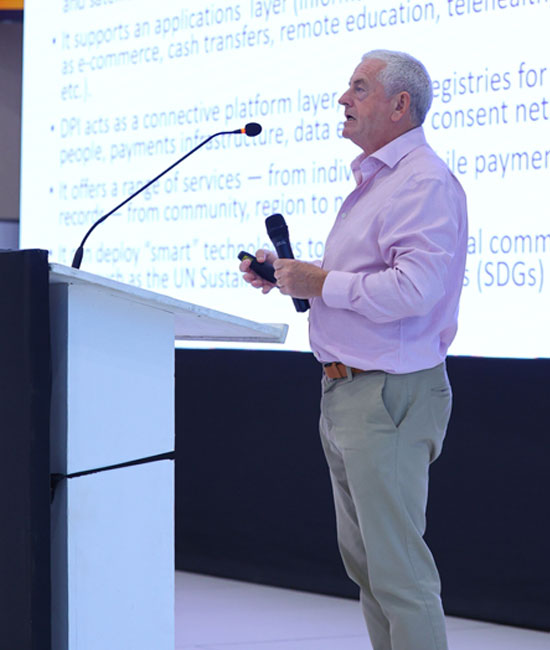
Professor Gerard Parr MBE, University of East Anglia
Bridging the divide: advancing secure, inclusive DPI
Joseph Lukwago, Joy for Humanity
While technology’s rapid advancement has delivered many benefits, it has also created new risks, especially in security and privacy. However, to address these vulnerabilities, they must first be understood.
Joseph first outlined security and privacy in the context of DPI. Security requires the protected use of data and protection against cyber threats, while privacy means safeguarding individuals. At the same time, ensuring these two elements is not enough as the availability of digital services is also required. Without all three, the digital divide grows, and people are left at risk.
Joseph then outlined the benefits of creating secure and inclusive DPI, including:
- improved access to essential services
- enhanced efficiency and transparency in governance
- empowerment of individuals and communities through skill-enhancing tools
- economic growth.
In Rwanda, for instance, the government is using DPI to support the agriculture sector and drive sustainable development.
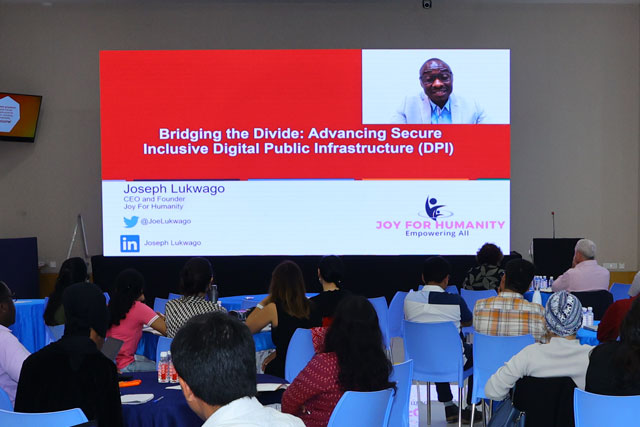
Joseph Lukwago, CEO and founder of Joy for Humanity presenting to delegates
They have developed a platform that connects farmers with buyers to improve market access and fair pricing. It also allows them to receive real-time information to adapt their practices.
To help participants implement inclusivity and security into their future work, Joseph presented the SMART approach. When developing DPI, innovators should ensure it is:
- S – simple and easy to use
- M – modifiable to different environments
- A – actionable
- R – relevant to target communities
- T – trusted, educating users about the accuracy and security of information
Closing his presentation, Joseph left the group with a Nelson Mandela quote to keep in mind: “There is nothing I fear more than waking up without a programme that will help me bring a little happiness to those with no resources.”
Building trustworthy DPI
Ramesh Narayanan, Modular Open Source Identity Platform (MOSIP)
To demonstrate the importance of trust in creating DPI, Ramesh shared his experience in developing MOSIP. The platform provides the building blocks that countries can use to create digital identification for citizens. Initially launched in India, it has since been used in three other countries with many more preparing to start their own digital ID process. Since its inception, more than 90 million people have received digital IDs through MOSIP. Critical to the platform’s success is that it is open source, allowing countries to own their digital identification and tailor it to citizen needs.
Another essential element of MOSIP’s success is building trust. Trust can be the determining factor as to whether a digital tool is used or not. Advocating for this, Ramesh called on participants to use principle-driven design approaches in their work going forward. This set of guidelines dictates that DPI are driven by important foundations such as transparency, privacy, openness with users, governance, and security. In practice, this means that channels for communication must be secure, data must be protected, and in case something does go wrong, there must also be transparency and opportunities for the public to submit grievances. Emphasising his point, Ramesh closed by saying, “Even if the tech is perfect, if there is no trust, a DPI will not take off.”
Using the examples and practical tools for privacy and security provided in the presentation, participants formed groups to conduct SWOT (strengths, weaknesses, opportunities, threats) assessments of different aspects of DPI, including usability, accessibility, affordability, and availability.
Across the groups, a variety of themes emerged. Digital literacy and inclusion were highlighted as potential strengths or opportunities in well-designed DPI, especially for rural and marginalised communities. DPI often requires digital literacy, which innovators must consider in developing solutions, but it can also advance digital inclusion if designed considering and building on local capacities.
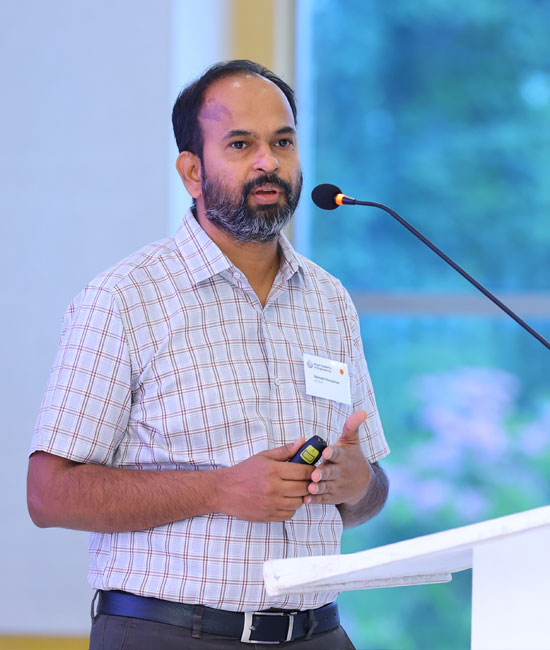
Ramesh Narayanan, Modular Open Source Identity Platform (MOSIP)
Trust in governments and institutions was identified as a strength and opportunity to improve user confidence in DPI, when they are designed or implemented in collaboration with government institutions. However, it could also present challenges depending on the country's context.
Throughout the discussions, security and privacy were seen as consistent threats which could be addressed by ensuring data protection. Technological infrastructure is an enabler to effective DPI, representing a strength and opportunity when well-maintained and available. At the same time, it must be expanded to reach remote and low-resource communities as well. Participants also highlighted the need for appropriate regulations and standards for DPI to promote transparency and protect citizens.
Keynote Speakers:
Sanjay Jain
Modular Open Source Identity Platform (MOSIP)
Sanjay Jain has worked across many sectors to drive inclusivity through technological solutions. In his keynote speech, Sanjay advocated for a widespread and conscious effort to enable equitable access to transformative technologies, reinforcing the core principle of bringing people into formal systems for a brighter future.
Sanjay was a part of the Google Map Maker team, where he worked on a crowdsourced, real-time platform to collect data and update maps. This tool was especially important for cities in low- and middle-income countries, as they are highly dynamic, often experiencing a growth rate of around 10% per year. Reflecting on this experience, Sanjay highlighted the impact of small contributions by many people in creating public goods that can benefit all.
Later, while working on Aadhar, Sanjay gained important insights into government operations, system building, and scalability, which differed from his experiences in the private sector. This project also showed him the pivotal role of technology in driving large-scale impact at a lower cost, for instance, by enabling more formal systems such as banking to serve people who had traditionally been excluded.
To ensure the success of DPI, intentionality is key. Bringing in stakeholders creates a supportive ecosystem that ensures that the needs of all people involved are met, from users to service providers. Importantly, every experience can be learned from – both successes and failures. Central, however, is the need for innovators to continue to drive inclusivity across their projects.
Professor Shalini R. Urs
MYRA School of Business
Shalini Urs has built her career on the drive to advance open access and open science, fostering equal availability of knowledge and resources. In her keynote speech, Shalini outlined what DPI means and how researchers and innovators can address challenges in technology to promote equality. A public infrastructure provides a service for the good of the people. This same principle applies to DPI. They serve as a shared resource to many ends, catalysing social, economic, and political impacts.
Science and technology, Shalini argued, are a public good themselves. This means they should be accessible, communicated, and shared by all. This perspective fostered the eScience or cyberinfrastructure movements in the 1990s, which set out to create infrastructure for collaborative science.

Professor Shalini Urs
Science is a public good.
Building on these movements, UNESCO ratified the Open Science recommendations in 2019, which set out values and measures to bring people closer to science and to improve access to information worldwide. She also underlined this using the FAIR principles, which provide a framework for digital assets, asserting they should be findable, accessible, interoperable, and reusable. In her own work, Shalini helped pioneer the idea of digital libraries which would improve open access to information and data.
Building on this, Shalini turned to data management in recent years. COVID-19 highlighted the need for open data to accelerate scientific progress. At the same time, data must be transparent to truly drive change. Standards and regulations can help ensure transparency and equal access to science, data, and technology.
Interested in the next Frontiers symposium?
Find out more about Frontiers, including eligibility below and @RAEngGlobal
More Symposia reports
Browse resource libraryAgriculture, big data and the knowledge economy
The event brought together 66 early- to mid-career researchers to share ideas and discuss development challenges arou…
